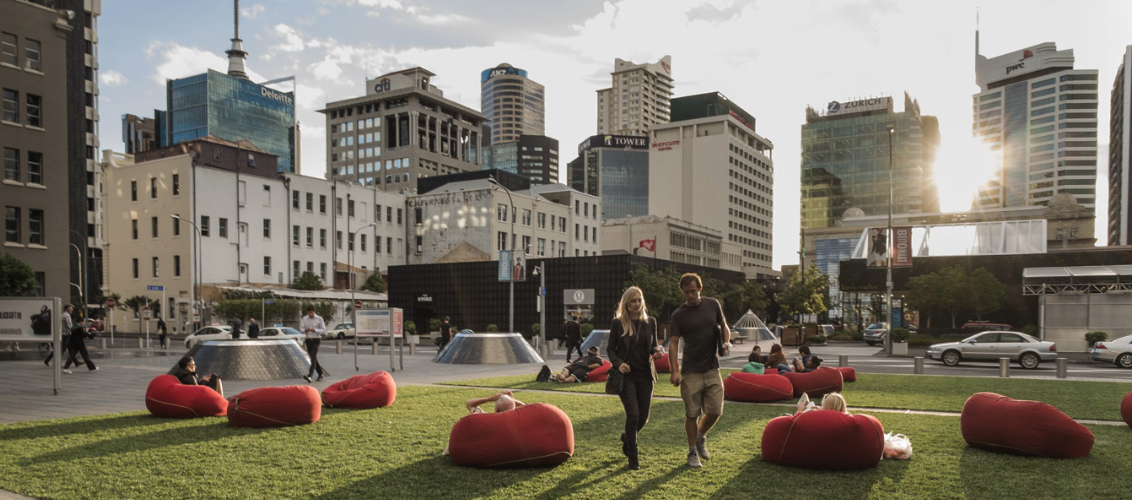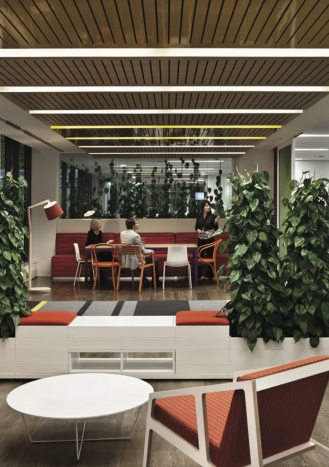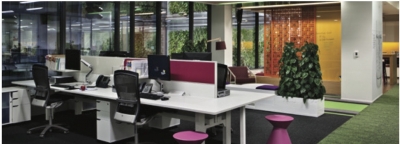Britoma?rt 25 years on: How one of Auckland’s first urban renewal projects is tracking

Having lived in Auckland most of my life, I’m increasingly impressed by how Auckland is “transforming” itself into a world class destination. Projects like Wynyard Quarter, the City Rail Link, Commercial Bay, Hobsonville Point and the urban renewal occurring across the wider city is changing the urban fabric and significantly improving facilities and infrastructure. Some may say it’s about time!
Not only is this transformation changing the urban landscape, it’s creating increased diversity and choice for occupiers/businesses to choose where to locate their business/operation. Auckland is now effectively a collection of sub-cities and precincts. Businesses now have to seriously think about where they locate and what drives their connections with customers and suppliers and what location drivers will attract and retain their staff.
We thought we’d provide a bit of an insight into some of these areas – where they’ve come from, what they offer and what the future looks like.
And we thought we’d start with Britomart. Not only is it on my doorstep but it was one of the first projects that kick started urban renewal.
The old Britomart
I used to help manage the portfolio of buildings located between Quay Street and Customs Street East generally known as ‘Britomart’. That was 25 years ago, and things were a lot different! For those too young to remember… there was a centrally located bus station (see photo below), an above ground car park building to the east and a handful of quite-derelict, rat infested, graffiti covered retail shops to the west. It is tempting to romanticise the place, but actually, it was pretty horrible – and not somewhere you would venture by choice.


Photo circa 1990s (Source, City Rail Link)
Britomart as we know it
Fast forward to present (skipping over quite a bit of public controversy and a couple of hundred million dollars of train station construction) and the Britomart of today is a completely different animal.


Britomart 2018
But what really sets Britomart apart, and where is it heading?
Most of us would think of Britomart as a place to eat or to shop. During the day its green and vibrant. By night, it’s well lit and feels welcoming. But the truth is, Britomart is mostly made up of offices (around 65,000m2 of offices in fact) with only around 20 percent retail by floor area (i.e. 17,000m2) – which may surprise many who think of it as a retail and hospitality destination. The major office occupiers include EY, Westpac, Financial Markets Authority, Southern Cross Health Society, and of course, my home base: Generator.
Unbeknown to me TwentyTwo (the company I now work for) has been part of this success. TwentyTwo acted for Southern Cross who were one of the first corporate tenants to locate within the office building at 2 Takutai Square, which anchors the eastern end of the precinct.


Southern Cross, Auckland
We’ve also been a long standing resident of Generator’s Britomart site, within Stanbeth House.
The transformation of this precinct feels very natural, practically organic – as if its crept up on us over time. However, none of it is accidental. Behind the scenes there’s a small but highly skilled team executing a master plan to make Britomart a place you want to return to day and night, and on weekends. Compare this to your typical office block area. Do you want to come back on the weekend? Generally, you don’t! Not willingly anyway. And if you did you’d most likely find yourself walking through a deathly quiet ghost town!
This is why we like the vibe that Britomart has become. There’s a holistic, complicated sense of place that draws you to this area – a mix of new built environment, urban renewal, heritage and industrial restoration, office, retail, open space, food and hospitality, and a close connection with the waterfront (which is slowly becoming more accessible).
Britomart of the future
And it’s not finished yet…. Right now, according to Jeremy Priddy of Cooper and Company, (the managers and ‘architects’ behind Britomart), “every available space is fully leased, but there’s potential in the future, when the timing is right, to add another 25,000m2 of offices and 10,000m2 of retail”. Proof of this demand can be seen with the Generator expansion of another 3,000m2 of co-working space soon to be available at 11 Britomart Place.
It will be interesting to see what other types of uses emerge as part of the next wave of development. Some of the retail buildings were only designed as temporary structures but this sub-precinct has been hugely successful.
There is demand in our view for more low-rise office space in this area (similar to the likes of the EY Building on Takutai Square) even with the mighty Commercial Bay being located close by. There is potentially demand for further retail, hospitality and tourism related uses given the proximity to the waterfront and cruise ship berthing – all helping to drive rejuvenation of this part of the city. The Americas Cup in 2021 will bring increased volumes of foot traffic which will be especially important for those retailers and nearby hotels. In fact, the idea of a new hotel within the Britomart precinct would make sense to us too.
For me it’s a full circle. Having started my career managing this precinct to now working within the area (from Generator) I have a bird’s eye view of the next stage of development. I’ll keep you posted.


 Rob Campbell is TwentyTwo’s Auckland business leader. He is known for his innovation, obsessive customer service and for delivering complex property solutions. He provides occupiers with advice on premises procurement, major transactions, projects, and strategy to ensure their properties align with business direction. This was originally published on
Rob Campbell is TwentyTwo’s Auckland business leader. He is known for his innovation, obsessive customer service and for delivering complex property solutions. He provides occupiers with advice on premises procurement, major transactions, projects, and strategy to ensure their properties align with business direction. This was originally published on 

